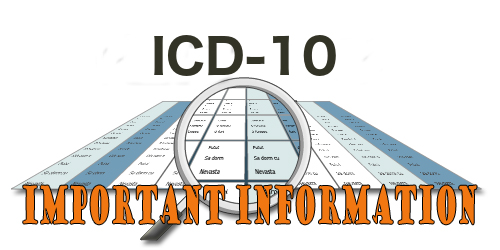 Dear Chiropractors and Staff:
Dear Chiropractors and Staff:
Are you having issues with not getting reimbursed due to the new ICD-10 codes and the deleted low back code? Having difficulty getting reimbursed from Humana and BCBS due to precertification requirements and other crazy denial codes?
Please read below where I provide you three key updates to the ICD-10 Codes and some workarounds that are of interest to your revenue cycle.
UPDATES: ICD-10 code Changes relevant to chiropractic
1. Deleted code: M54.5 low back pain.
2. NEW codes to replace the above deleted code include:
• M54.50 Low back pain, unspecified
• M54.51 Vertebrogenic low back pain
• M54.59 Other low back pain
3. Other Chiropractic-Relevant New codes added:
• M45.A0: Non-radiographic axial spondyloarthritis of unspecified sites in spine
• M45.A1 : Non-radiographic axial spondyloarthritis of occipito-atlanto-axial region
• M45.A2 : Non-radiographic axial spondyloarthritis of cervical region
• M45.A3 : Non-radiographic axial spondyloarthritis of cervicothoracic region
• M45.A4 : Non-radiographic axial spondyloarthritis of thoracic region
• M45.A5 : Non-radiographic axial spondyloarthritis of thoracolumbar region
• M45.A6 : Non-radiographic axial spondyloarthritis of lumbar region
• M45.A7 : Non-radiographic axial spondyloarthritis of lumbosacral region
• M45.A8 : Non-radiographic axial spondyloarthritis of sacral and sacrococcygeal region
• M45.AB : Non-radiographic axial spondyloarthritis of multiple sites in spine
NEW Cough codes:
• R05.1:Acute cough
• R05.2: Subacute cough
• R05.3: Chronic cough
• R05.4: Cough syncope
• R05.8: Other specified cough
• R05.9: Cough, unspecified
WORKAROUNDS
If you have claims to send (hopefully only a few) with DOS prior to October 1, with low back pain diagnoses, what should you do to ensure they do not reject by the clearinghouse and payer for adjudication? Your clearinghouse should, by now, be updated to include accepting claims with the old M54.5 code IF the DOS is prior to 10/1/2021. The commercial payer claims adjudication systems should also be updated now to accept claims prior to 10/1/2021 DOS if you billed with the old M54.5 code. Please make sure to get any outstanding claims with DOS prior to 10/1 submitted as soon as possible, if you have not already. If you only have a few claims going to commercial, you also have the option of sending these on paper instead of through your clearinghouse. Do not do both.
State Medicaid programs and Medicare will still require the use of the M99 codes for billing, so continue using those codes for these claims.
HUMANA is requiring pre-authorizations on all chiropractic therapy codes. The latest news is that starting in January, there will now be three entities that will be doing the pre-authorizations. a. Optum, b. Humana itself, or c. A new vendor, Cohere Health. Humana has advised us that the entity will be selected based on the patient’s policy.
When you verify a patient’s benefits you will need to make sure to ask:
if preauthorization on your therapy/rehab codes is required on the member’s policy,
which entity will be preauthorizing/reviewing,
and the process to follow when requesting services requiring preauthorization.
Not getting paid by BCBS, with crazy denial codes? No one at BCBS to help? You’re not alone. Offices across the country are experiencing this. So what can you do at this point? First, do a claims audit on your BCBS claims. Do you have the GP modifier attached? Is preauthorization on therapies required on the patient’s plan using AIM Specialty Health?
Your other option is to ask the patient to call into BCBS and advise that claims are being denied even though they have been billed out correctly. We do have scripting available to help your patients with the communication. Click here and request more information.
Questions? We’re here to help!
Lisa Barnett
PH: 920-459-8500
Email: lisa@pmaworks.com
“Increasing your collections through better billing and documentation”


 With the increase in notes requested from third party payers, more recently Medicare secondary plans, it is good time to review the process once you receive a request.
With the increase in notes requested from third party payers, more recently Medicare secondary plans, it is good time to review the process once you receive a request. Dear Chiropractors and Staff:
Dear Chiropractors and Staff:

